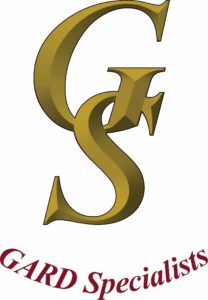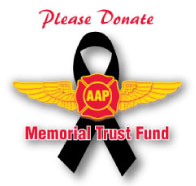A recent article posted on fireaviation.com offered more insight into the world of fire politics, and how our product is presented to the US Forest Service, other government agencies, the public, and ultimately the taxpayer. As consumers, we are presented daily with the question of value and opportunity cost. A recent stay at the Porterville Motel 6 is a fine representation…nothing more than a bed and shower in semi-sanitary conditions. If Tom Bodett were to represent the Motel 6 product for more than it is, he would quickly learn the lessons of choice. Fortunately for Tom, most patrons expect a room where one shouldn’t go barefoot.
As a service provider, it is very important not to lose sight of our basic role in providing a product for a customer. We must produce a quality product that has value…value as defined by the consumer. Sometimes the customer is hard to define in the beuacracy that is the Fed. Sometimes the value fails to come from the product, but rather the deep pockets of lobbyists. Sometimes the producer is very good at convincing the customer that life will cease without their product, as is the case with many Apple gadgets and “i” devices. However, we proprietors should never lose sight of perceived value based on quality and price of our product. We also need to realize there are tangible and intangible elements of quality. Quality comes in all shapes and sizes. Quality in aerial firefighting is not only coverage levels and drop patterns, but also service, time, perception, and flexibility. Valuation recognition and observation is a key to a sustainable business model. One must meet customer expectations, and adapt when not.
Some providers in our industry are attempting to valuate the airtanker product solely on the basis of cost per gallon delivered. Though this is a factor, the reasoning is too narrow. Using cost/gallon to quantify value in firefighting is inherently flawed because it fails to consider all elements of quality.
We’re not in the business of transporting retardant from point A to point B, we’re in the business of firefighting where many intangibles offer value, particularly time and flexibility. Countless studies have been done on the value of IA, a mission that demands time efficiency, and operational flexibility. What budget can afford $60-70K for a couple of IA smoke checks on a slow day? However, if one waits to see if the smoke develops, compromising the whole concept of IA, the costs are usually much greater. Consequently, anything that effects time and flexibility has the potential of effecting the value of our product. Variables such as location, loading, dispatch processes (another article perhaps), and aircraft speed all effect time, flexibility, and therefore value.
Here’s an example of what I mean with regards to time adding value to a product…
Delta Airlines has 11 flights a day from KMSP to KATL…all narrow-body aircraft. If there is so much demand between these two cities, why aren’t B777s and A330s doing them? I’m sure they can get the same capacity out of 3-4 wide-bodies as they do with Mad Dogs and the Plastic Fantastic and do it much cheaper, but what matters more is schedule (time).
Using this logic one might argue that Delta should be using 25 CRJs instead of MD80s and A320s between KMSP and KATL. Well…there is a point where frequency doesn’t pay dividends, e.i. add additional value. A balancing act, that Delta constantly refines with demand. A balancing act between VLATs, LATs, SEATs, scoopers, rotor-wing and other aerial assets the USFS still attempts to figure out.
Where do VLATs fit in aerial firefighting? VLATs are an awesomely effective tool…one can’t help but be in awe when they drop. They certainly add value to aerial firefighting, but from a different quality set than a traditional LAT. In fact, it offers the intangible quality of perception. The perception by the general public that VLATs are better because they’re bigger and carry more payload adds value to the VLAT product. VLATs are also valuable because they meet IAB requirements; VLATs are valuable because they have greater range; VLATS are valuable because they can lay long contiguous lines of retardant without the potential for gaps. All operators need to know is where the value lies and harness it sell their product, instead of comparing their qualities to those of a different tool. They also need to realize they’re not the only tool in a firefighting toolbox, a toolbox full of other tools that are better suited for certain jobs. And who decides what tool to use for what task, the tool or the mechanic? It’s obvious what tool the USFS desires for the IA mission. Are they wrong? Maybe. Is using cost per gallon delivered as the sole measurement to valuate a product wrong? Definitely.
This begs the question of how one defines and adds value to airtanker products. Unfortunately this is hard to broadly answer because it depends on the product and mission…the tool and the job. The qualities of time, tank, range, speed, safety, flexibility and image all influence value. It’s up to the proprietor to recognize the correct blend of qualities for the job and then sell the value. If they do this successfully, they win. If they don’t, they become capitalism’s statistic.
With regards to the utilization of aircraft for wildland firefighting, the overwhelming consensus says the greatest value comes from IA capabilities. IA is the one thing that adds significant value to our product. Therefore, operator leadership should be focusing on the correct blend of airtanker qualities, both tangible and intangible, which add value to the IA product. True IA is first response with something more appropriate (cost effective), with tools such as VLATs as a backup when needed. Real IA requires enough adequate and effective airtankers, close to potential multiple starts, to hit at first smoke. I believe if Vince Lombardi were a aerial firefighter he would say, “Initial attack isn’t everything, it’s the only thing.”
( Contributions from Walt Darran, and Dean Talley)
Jerome Laval’s “Aerial Firefighting Tool Box” inserted by Walt in support of attached comments:











Tim;
Excellent article covering am illusive subject that few have taken the time to think through and address.
A lot of smoke is generated by some agencies, contractors, and pilots trying to sell their favorite flavor as the only worthwhile tool in the box, or at least the one that is best on the vast majority of fires. I have seen/heard at least two SEAT operators claim four AT802s are always superior to a single 3000-gallon LAT. I have heard VLAT operators claim a couple of their aircraft can cost-effectively provide IA over several hundred square miles, even during periods of high frequency multiple starts, when their services will most likely be committed to 1 or 2 large fires, therefore no longer available for IA. RAND says we should make do with just a handful of LATs, and 40+ scoopers.
Personally, I feel strongly that what USFS needs as much as anything is a vastly upgraded dispatch organization, intimately knowledgeable in the capabilities and limitations of each airtanker type, with the authority to pick and choose the most appropriate tool for a given fire, and the ability to swap aircraft types and reassign aircraft during going fires when appropriate.
Yeah, I hear you—what am I smoking? But we need to think outside the box if we ever hope to dig our way out of the catatonic crevasse the USFS HQ has dumped us into.
Since I can’t insert an image into a “comment”, I’ve taken the liberty of adding a link to Jerome Laval’s “Aerial Firefighting Box” to Tim’s article—sorry Tim—I owe you one! The Box has elements we’ve all talked about for years, but put together in one elegant picture by Jerome. Think about it. You need all sides of the box to fit in order to be effective. And no single measurement, like cost-of-gallon-delivered, can, by itself, always tell you what tool is best for a specific job. As IBM says, “Thimk”. Comments, please.